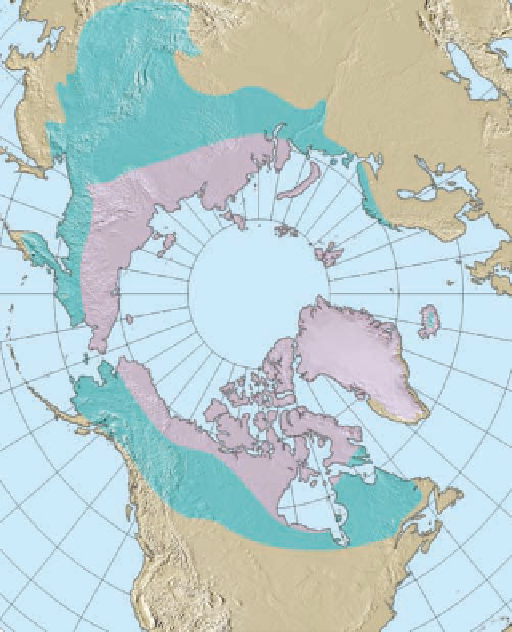Geology Reference
In-Depth Information
?
landslides, one of the most effective and inexpensive ways to
reduce the potential for slope failure or to increase existing
slope stability is surface and subsurface drainage of a hillside.
Drainage serves two purposes. It reduces the weight of the
material likely to slide, and increases the shear strength of
the slope material by lowering pore pressure.
Surface waters can be drained and diverted by ditches,
gutters, or culverts designed to direct water away from
slopes. Drainpipes perforated along one surface and
driven into a hillside can help remove subsurface water
(
What Would You Do
You are a member of a planning board for your seaside
community. A developer wants to rezone some coastal
property to build 20 condominiums. This would be a boon to
the local economy because it would provide jobs and increase
the tax base. However, because the area is somewhat hilly
and fronts the ocean, you are concerned about how safe the
buildings would be. What types of studies would need to be
done before any rezoning could take place? Is it possible to
build safe structures along a hilly coastline? What specifi cally
would you ask the environmental consulting fi rm that the
planning board has hired to look for in terms of actual or
potential geologic hazards if the condominiums are built?
Figure 11.25). Finally, planting vegetation on hillsides
helps stabilize slopes by holding the soil together and reduc-
ing the amount of water in the soil.
Another way to help stabilize a hillside is to reduce its
slope. Recall that overloading and oversteepening by grad-
ing are common causes of slope failure. Reducing the angle
of a hillside decreases the potential for slope failure. Two
methods are usually employed to reduce a slope's angle. In
the
cut-and-fill
method, material is removed from the up-
per part of the slope and used as fi ll at the base, thus pro-
viding a fl at surface for construction and reducing the slope
(
◗
cities in the United States, and has led to stronger local build-
ing codes, better land use, and decreased losses to structures
built on hillsides and other possibly unstable areas.
Although most large mass movements usually can-
not be prevented, geologists and engineers can use various
methods to minimize the danger and damage resulting from
them. Because water plays such an important role in many
Figure 11.26). The second method, which is called
bench-
ing
, involves cutting a series of benches or steps into a hill-
side (
◗
◗
Figure 11.27). This process reduces the overall average
◗
Figure 11.19
Permafrost and Solifl uction
ASIA
EUROPE
90
°
W
Arctic Ocean
0
°
North
Pole
180
90
80
°
70
°
60
°
°
E
50
°
Pacific
Ocean
Continuous
zone
NORTH
AMERICA
Atlantic
Ocean
Discontinuous
zone
Distribution of permafrost areas in the Northern Hemisphere.
a
Solifl uction fl ows near Suslositna Creek, Alaska, show the typical
lobate topography that is characteristic of solifl uction conditions.
b













Search WWH ::

Custom Search